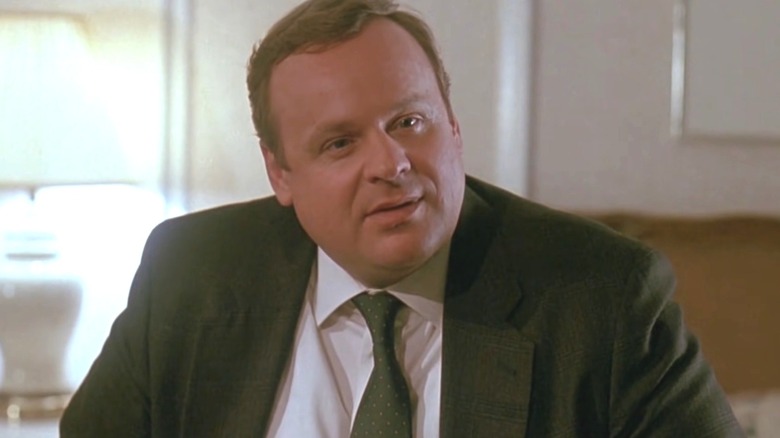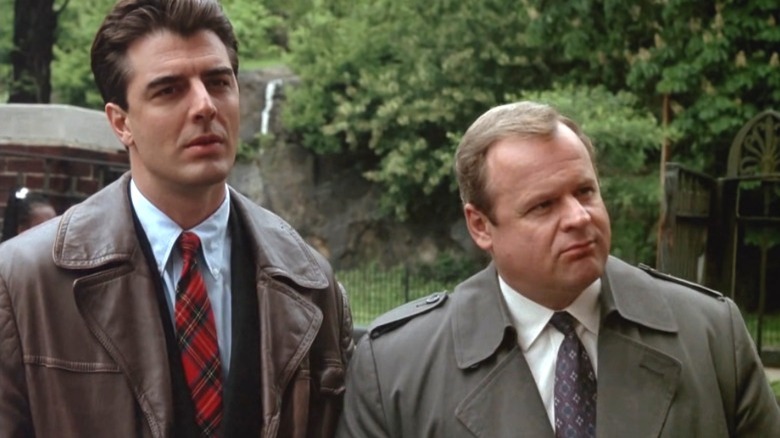Law & Order Re-Runs Were The Testing Ground For Digitally Added Product Placement
We may receive a commission on purchases made from links.
A little product placement never hurt anybody — at least, that's the sentiment that many TV shows share. While commercial breaks may be the primary method in which brands work to monetize the realm of TV, there has long existed a stealthier form of marketing by way of featuring real-world products in the shows themselves. Whether it's a character gulping down a bottle of Coca Cola or even that time "Arrested Development" featured a real Burger King restaurant, product placement aims to keep popular brands in the forefront of consumer minds even when they're immersed in the escapist realm of a TV show.
For those that managed to catch the "Law & Order" re-runs on TNT back in the early 2000s, it may have been surprising to see just how much more product placement there was in the early seasons of the procedural. Truth be told, however, there wasn't as much product placement in the original versions of these early episodes. TNT's re-runs were actually a major testing ground for a new technology that involved digitally inserting real-world products into finished installments of "Law & Order."
Law & Order re-runs had a bunch of digital products
TNT's re-runs of "Law & Order" in the early 2000s featured added instances of product placement by way of digitally superimposing items from different brands into scenes that had already been filmed. For instance, a generic cup of coffee in a character's hands may have been digitally edited to look like a Starbucks cup, and so on.
Per a 2001 report from The New York Times from right before the strategy was undertaken, TNT was experimenting with the technology in the hopes of locating a new marketing revenue stream for its broadcast content. The network would sell these digitally-produced advertisement spots to brands, making the re-run content even more profitable. "We're always looking at ways to leverage our viewer relationships for marketers, in an appropriate manner,” AOL Time Warner spokesperson Mark Harrad told The New York Times.
Of course, modern episodes of "Law & Order" don't feature any digitally-added product placement, so what ended up happening to the technology? Well, it's actually still around in the greater TV space. In fact, Amazon has spoken out about the benefits of this strategy as recently as late 2022. So, if Jack Ryan starts eating some CGI Taco Bell in future episodes, "Law & Order" is the series to thank for proving that digital product placement can work.

